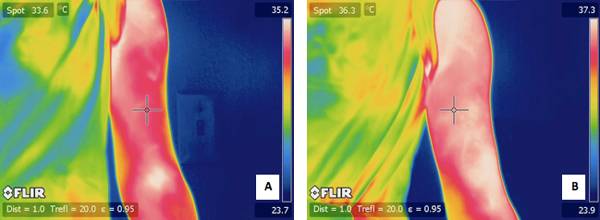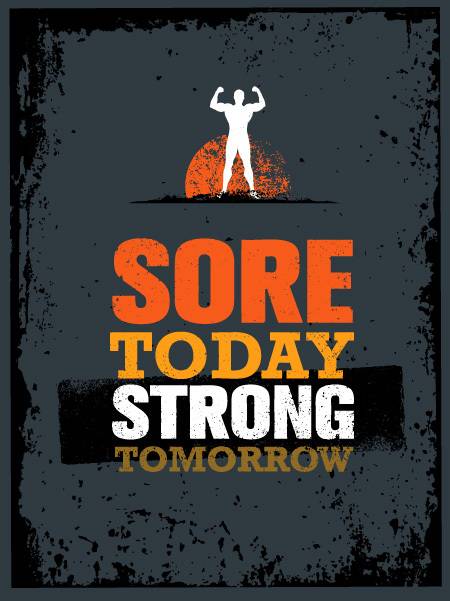You know that moment. You wake up a few days after a workout and think to yourself, “Ah, now I feel it.” The technical term for this post-workout evidence of hard effort is delayed onset muscle soreness, or DOMS. Its presence is unmistakeable and, in some cases, unbearable.
The good news is by understanding DOMS you can take steps to reduce its intensity and prevent more serious cases. So let’s delve into what DOMS is, why it happens, and how to train through it.
You know that moment. You wake up a few days after a workout and think to yourself, “Ah, now I feel it.” The technical term for this post-workout evidence of hard effort is delayed onset muscle soreness, or DOMS. Its presence is unmistakeable and, in some cases, unbearable.
The good news is by understanding DOMS you can take steps to reduce its intensity and prevent more serious cases. So let’s delve into what DOMS is, why it happens, and how to train through it.
What Is DOMS?
DOMS happens when you work your muscles harder than they are used to working. That’s the simple explanation, but on a biological level there’s a lot more going on. Coach Doug Dupont outlined some of these cellular effects of exercise in his analysis of a fascinating study on they body’s response to exercise.
The researchers who designed the study put the subjects through a rigorous workout, followed by a series of blood tests. The research team found an increase in injury markers, as well as higher levels of neutrophils and lymphocytes, which play an important role in immune response.
“The research team found an increase in injury markers, as well as higher levels of neutrophils and lymphocytes, which play an important role in immune response.”
The results of this study make sense. When we work our bodies harder than they are used to, the response is inflammation (as indicated by the increase in injury markers). The next natural step is an immune response. When our bodies can’t deal with exercise-induced muscle damage, we experience DOMS.
As noted in coach Becca Borawski Jenkins’s article,Just How Sore Are You? Scientists Use Infra-Red to Measure DOMS, temperature regulation plays a crucial role in whether or not you experience DOMS. Jenkins reported on a study that measured post-exercise muscle damage with infra-red imaging.
…researchers determined infra-red imaging could be an effective way to measure DOMS for future study. Researchers hypothesized the increase in temperature is likely due to friction between exercised muscle fibers, a boosted metabolism, and increased blood flow to the damaged muscle. Undamaged muscle would return to normal temperature, whereas damaged muscle would not due to the elevated circulation.

Is It Good or Bad?
Many people see DOMS as a sign of hard work and a job well done. Others avoid it like the plague. So is it good or bad? Coach Will Levy analyzed a research article by Brad Schoenfeld and Bret Contreras that provided interesting insight into what DOMS really means for your training:
While “the exact mechanisms are not well understood,” the paper by Schoenfeld and Contreras explained, “DOMS appears to be a product of inflammation caused by microscopic tears in the connective tissue elements that sensitize nociceptors and thereby heighten the sensations of pain…”
To summarize, let’s just say DOMS appears to occur due to connective tissue microtrauma. It’s also worth mentioning that while most exercise can induce some DOMS, exercise with a greater emphasis on the eccentric phase (the lengthening or stretching phase) plays the most significant role in the manifestation of DOMS.
In short, feeling sore and getting swole don’t necessarily go hand in hand. A little muscle damage is good and necessary for growth. But as Levy noted in his article, DOMS: The Good, the Bad, and What It Really Means for Your Training, when DOMS causes a decrease in force production or negatively affects your motivation to work out, the disdvantages outweigh the benefits.
Recovery Is Essential
Smart recovery can prevent DOMS from derailing your training. In her article, Does Aerobic Exercise Help Get Rid of DOMS? coach Katherine Derbyshire reported on a fascinating study published in the Journal of Strength and Conditioning Research. The researchers suggested moderate aerobic exercise after strength training may help reduce DOMS and can even enhance the effects of lifting weights.
“Keeping moving enables the muscles to contract and assists the heart in pumping. It allows the vessels to contract slowly and expire the waste products as carbon dioxide.”
Of course, strength training isn’t the only thing that can cause DOMS. Coach Simon Kidd described how to prevent DOMS after endurance training in his article, The Importance of Cooling Down After a Race or a Workout:
If you stand still, then the heart has to all the work by itself. If you continue to move, then the action of the muscles will assist pumping fluids around the body. Keeping moving enables the muscles to contract and assists the heart in pumping. It allows the vessels to contract slowly and expire the waste products as carbon dioxide.
A good cool down will typically last between five to ten minutes, depending upon the level of activity. Clearly, it is impractical to connect up a breathing mask at the end of an event. However a good guide will be your heart rate. The point when your heart rate starts to stabilize is indicative of your body returning to normal, although it will remain elevated for some time.

Supplements
A lot of supplement companies claim their products prevent DOMS. If you’re wondering which ones actually work, check out the following articles that outline the science behind these claims:
- BCAAs and Taurine Reduce DOMS: A combination of taurine and BCAAs reduced soreness two days after exercise.
- Caffeine Decreases Muscle Soreness: Caffeine improved performance and reduced fatigue after a brutal set of bicep curls.
- DHA Aids Recovery After Intense Eccentric Exercise: DHA decreased muscle soreness in the first four days after exercise.
- Anti-Inflammatories: Green Tea, Ginger, and the Athlete: Ginger supplementation reduced soreness in athletes by 25%.
- The Effect of Pomegranate Juice on Soreness in Trained Athletes: Pomegranate juice was recommended for seasoned athletes due to its effects on soreness and strength preservation.
What are your secrets to avoiding the DOMS slump? Share in the comments below!
You Might Also Enjoy:
- What Do Inflammation Markers After Intense Exercise Tell Us?
- Anatabine Not as Effective as Hoped for DMS
- Healing the Adrenal System: The Effectiveness of Massage Therapy
- What’s New On Breaking Muscle Today
Photos 1 and 3 courtesy of Shutterstock.






